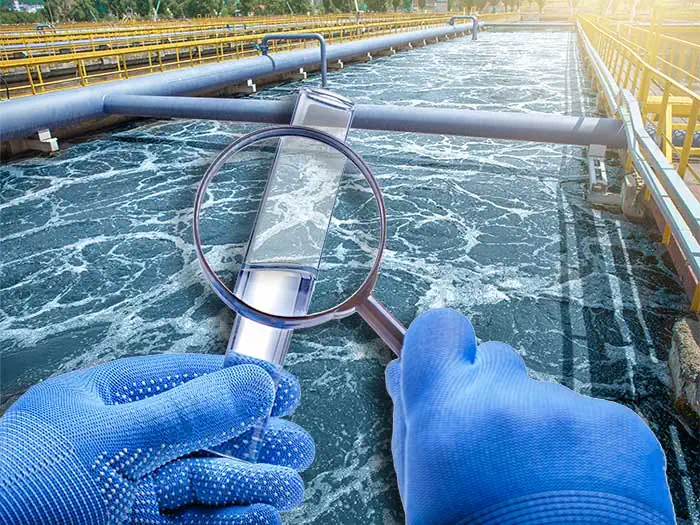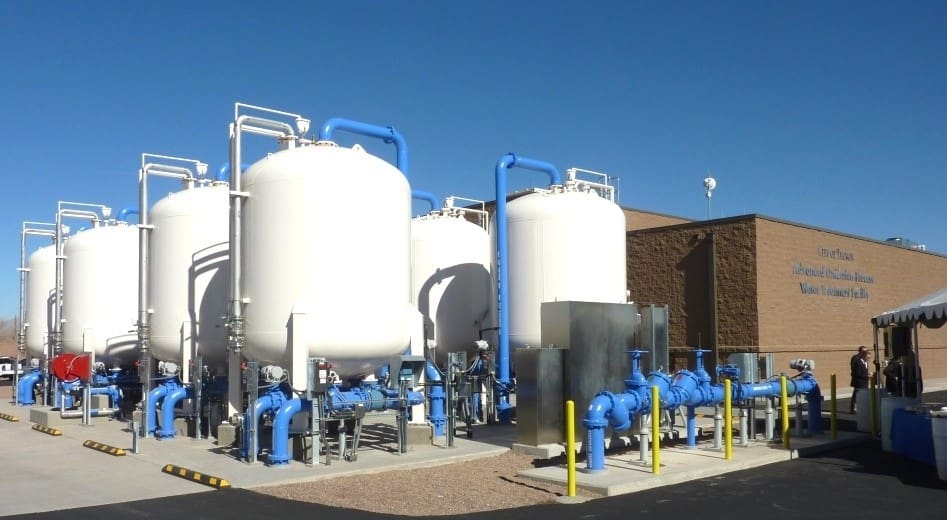The Complete Guide to PFAS Treatment for Environmental Contamination
Exactly How PFAS Therapy Makes Sure Clean and Lasting Water
The presence of PFAS, typically understood as "forever chemicals," presents significant difficulties to water high quality and public wellness. The implications of these therapies prolong past prompt health benefits; they elevate essential inquiries regarding lasting water management methods that must be dealt with to make certain a durable future.

Comprehending PFAS Contamination
PFAS, or per- and polyfluoroalkyl materials, have actually become a substantial ecological issue because of their widespread frequency and determination in the environment. These synthetic chemicals have been used in different commercial applications and consumer items, consisting of non-stick cookware, water-proof garments, and food packaging, as a result of their unique residential or commercial properties such as water and oil resistance.
The contamination of dirt and water sources by PFAS occurs mostly through industrial discharges, firefighting foam usage, and leaching from land fills. pfas management. When launched, these materials are resistant to destruction, bring about their accumulation in the setting. This persistence elevates essential issues, as PFAS can take a trip cross countries via groundwater and surface area water supply, impacting drinking water supplies and communities

Health Threats of PFAS
The perseverance of PFAS in the environment elevates significant health and wellness worries for people subjected to these compounds. Referred to as "permanently chemicals," PFAS do not break down conveniently and can build up in bodies gradually. Research has connected PFAS exposure to different damaging wellness effects, consisting of body immune system disorder, liver damage, and increased risk of certain cancers cells - pfas management. Especially, researches have revealed elevated cholesterol degrees and potential impacts on reproductive and developmental wellness, particularly in pregnant individuals and babies.
The ubiquity of PFAS in consumer products, such as non-stick pots and pans, water-repellent textiles, and food packaging, further enhances the risk of direct exposure. Consuming water contaminated with PFAS is a substantial problem, as these chemicals can leach into groundwater sources. At risk populations, including children and those living near industrial sites, might encounter intense dangers as a result of their establishing systems and prospective for greater exposure levels.
As understanding of these health and wellness threats proceeds to grow, regulatory companies are starting to develop guidelines for PFAS levels in drinking water. Public wellness efforts are necessary to mitigate exposure and secure areas from the long-lasting results of these hazardous compounds.

Innovative Treatment Technologies
Exactly how can we effectively tackle the difficulties postured by PFAS contamination in water resources? Cutting-edge treatment technologies are becoming critical options in the quest for clean water. These approaches concentrate on the elimination or destruction of per- and polyfluoroalkyl compounds (PFAS), which are well-known for their determination in the atmosphere.
One appealing technique is adsorption using innovative products, such as turned on carbon and ion exchange resins. These materials have actually shown effectiveness in recording PFAS molecules from water. An additional significant modern technology is membrane purification, useful site which utilizes nanofiltration and reverse osmosis to separate contaminants at the molecular level, therefore providing an obstacle against PFAS.
Furthermore, advanced oxidation procedures (AOPs) utilize solid oxidants to break down PFAS substances into harmless by-products. This approach is especially efficient for dealing with highly infected water resources. Bioremediation methods, utilizing particular bacteria, are additionally being discovered to weaken PFAS.
As research study proceeds, hybrid systems that incorporate multiple technologies may offer enhanced efficiency, attending to the complexities of PFAS contamination. The development and execution of these cutting-edge therapy modern technologies are important steps towards making sure the security and sustainability of our water sources.
Advantages of Efficient PFAS Therapy
Efficiently dealing with PFAS contamination in water sources considerably boosts public health and wellness and environmental safety and security. PFAS, commonly referred to as "forever chemicals," are immune to degradation and can build up in the body, resulting in significant wellness threats such as cancer, liver damage, and body immune system disorder. By carrying out efficient therapy techniques, communities can lower direct exposure to these unsafe compounds, eventually boosting the health outcomes of their populaces.
In addition, successful PFAS therapy adds to the preservation of local ecosystems. Contaminated water can detrimentally influence water life and disrupt the fragile balance of neighborhood environments. By making certain tidy water, therapy processes secure biodiversity and keep environmental honesty.
In addition, efficient PFAS remediation can foster public self-confidence in water quality. When look here communities are guaranteed that their alcohol consumption water is without dangerous pollutants, it advertises click this a sense of security and wellness. This depend on is necessary for community involvement and assistance for ongoing water administration campaigns.
Future of Water Sustainability
Amidst expanding issues regarding water high quality and scarcity, the future of water sustainability rests on ingenious approaches and collaborative efforts. As communities deal with the looming hazards of contaminants like PFAS, the advancement of advanced therapy innovations is necessary. These modern technologies not only concentrate on the elimination of damaging materials but additionally promote the reuse and recycling of water, consequently reducing overall need.
Moreover, effective water governance plays a critical role in making sure sustainable techniques. Policymakers must incorporate scientific study with regulatory structures to establish clear standards for water usage and treatment. Stakeholder involvement, consisting of local areas and sectors, promotes a sense of shared obligation and urges sustainable methods throughout different sectors.
Investment in infrastructure is additionally important; updating aging systems to integrate contemporary filtration and purification techniques can considerably improve water quality. Furthermore, welcoming eco-friendly technologies, such as all-natural filtration systems, can supply eco-friendly solutions.
Eventually, the future of water sustainability lies in an all natural strategy that combines technology, policy, and neighborhood involvement. By prioritizing these elements, we can safeguard our water sources for generations ahead, guaranteeing tidy and lasting water for all.
Final Thought
In final thought, the efficient treatment of PFAS is essential for ensuring clean and lasting water. Eventually, robust PFAS treatment approaches contribute to lasting strength in water monitoring, cultivating public trust fund in water top quality and advertising sustainable techniques.